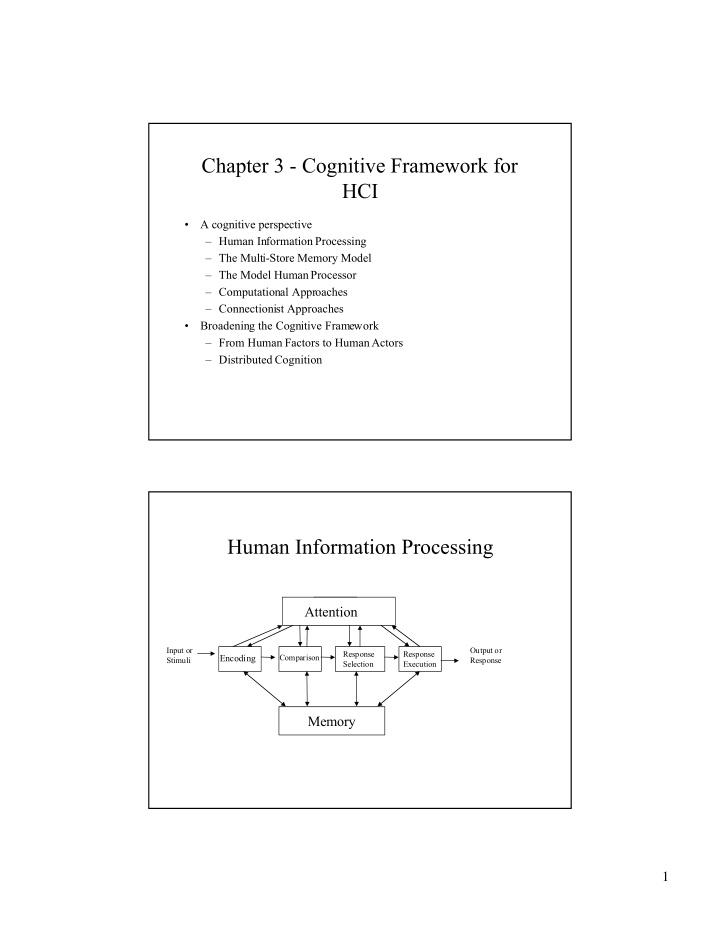



Chapter 3 - Cognitive Framework for HCI ¥ A cognitive perspective Ð Human Information Processing Ð The Multi-Store Memory Model Ð The Model Human Processor Ð Computational Approaches Ð Connectionist Approaches ¥ Broadening the Cognitive Framework Ð From Human Factors to Human Actors Ð Distributed Cognition Human Information Processing Attention Input or Output or Response Response Comparison Encoding Stimuli Response Selection Execution Memory 1
The Multi-Store Model of Memory Long-Term Short-Term Memory Store Memory Store External Sensory Store Decay, interference Input Lost from short- and loss of strength Lost from term memory in long-term Sensory store memory storage Store The Model Human Processor ¥ An early model of the user, based on an abridged version of the human information processing model ¥ Consists of three interacting systems: the perceptual system, the motor system, and the cognitive system. ¥ Provides a means of characterizing the various cognitive processes that are assumed to underlie the performance of a task. ¥ While useful this is considered oversimplified and ineffective 2
Computational Approaches ¥ Focuses on on modelling human performance in terms of what is involved when information is processed ¥ Primarily the cognitive system is conceptualized in terms of the goals, planning, and action that are involved in task performance Connectionist Approaches ¥ Otherwise known as neural networks ¥ Adopts the brain metaphor instead of the computer metaphor as a theoretical framework ¥ All cognitive processes are viewed as activations of the nodes in the network and the connections between them 3
From Human Factors to Human Actors ¥ The term Òhuman factorÓ is used in ergonomics and is considered passive ¥ To change emphasis to the person as an autonomous agent that has the capacity to regulate and coordinate his or her behavior the term has been changed to Òhuman actorÓ Distributed Cognition ¥ Involves describing cognition as it is distributed across individuals and the setting which it takes place ¥ Functional Systems - The collection of actors, computer systems, and other technology and their relation to each other in the environmental setting in which they are in ¥ Analysis of how information moves and transforms between different representation states of the objects in the F.S. and the consequences of these for subsequent actions ¥ Breakdowns - incidents that arise at the work setting that should be analyzed using the entire F.S. 4
Recommend
More recommend